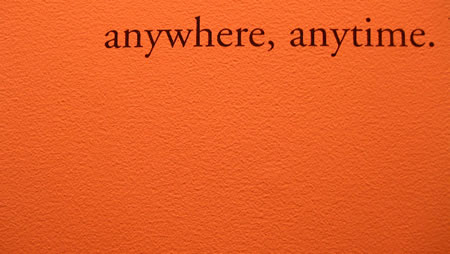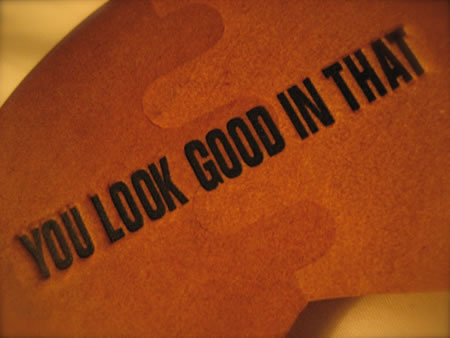These are the days of experiments: everywhere, everytime. And great ideas, inspirations, and answers — coupled with the wisdom of experience — can click in an instant.
See something, react to inception, go forward.
Sensing is big — yet what is the degree of recognition?
Traveling the world, working on brands large and small, freshly new, or founded on centuries of evolution, there are certain instincts — moments of perception — that come into being. And that idea of brand, the fiery sentiment of a founder and foundation, that might spread to many (or remain simply as one person, start to finish,) the point will be the whole sense that wraps around it — and what lies within. But it might be a foundation for reaction — what is the sense of what lies within, more particularly, what is the sensing of what lies within? How, really, did that brand “start.”
An instinct. A reaction. An inspiration. A momentary line of thinking — that inspired the intuition of action. “That feels right.”
That decision, that sensing — it’s a moment of thinking. We think about that in relationship to pondering how brands relate — how is the story carried?
The inspired banding ideal is the gift in the package, what’s in the box — what’s in the interior — and the story that might unfold, or explicate, around it. There are a number of obvious machinations that make brands work — a listing might be, to our thinking:
• Humanity — great brands are either linked to a person, inspired by a human need, or relate to a human cause. That might be a human brand – the person, or it might be the dream of the one, that’s shared by many. But the human character of brand evocation — the voice that it uses is of tantamount importance. Humanity comes from “earth” (Latin).
• Operational functionality — any great brand has something to offer, that supports its enterprise. Through smartness, failure, winning successes, and the ups and downs of the cogs of exchange, it needs to work. Operation comes from “work” (Latin) while function is derived from “performance” (Latin).
• Cult and culture — amazing brands evince their own culture. Many brands pay a great deal to the notion of culture — but even the smallest brand can have an intent of cultivation. There are numberless articles on grand brand enculturation; but in many, it’s the human inspiration that starts that sentiment of application; the flow ripples, and cult emerges. Cult comes from “care, cultivation, worship – and, to till” (Latin).
• Characterization — humanity spells emotion; and while some enterprises would prefer to avoid the idea of personality, it’s becoming increasingly clear that brands, enterprises and the people that are working inside them are either memorable, characters in a evolving story, or merely another busy-ness touting attributes that aren’t truly held. Character comes from “symbol or imprint on the soul” (Greek).
• Storytelling — the idea of the story is as old as anything human, tens of thousands of years as a way of transmitting ideas and ideals, lessons and adventures, archetypes and mythic recurrences. With the simple foundation that people tend to tell stories about who they are, and define their lives as sequences of stories (see Facebook) the idea of marketing grand brands as layered in story is an easy equation. Story comes from “history” (Latin).
• Marketing — extraordinary brands have intriguing forms of going to market; there might be a strategic marketing plan that purports the foundation of sales, but in reality, it is the measurement of all the aforementioned factors that truly build a market, a community, and a way of offering “goods” that can be presented in a market — coming from Etruscan “an ancient measure of economics — wares.”
With these foundations, I ponder the vagaries of the intuitive sense about “rightness” and “goodness.” Using these words in an especial manner, we might suggest that rightness could be aligned to the right path, the solid way, (that’s right) in rethinking the correctness of approach. But what’s right?
Right might be: simple, direct, honest, open, willingness to change.
Everyone is building on everyone else’s (previous) positioning and advancement of experimental knowledge about relationship development and audience engagement; and that keeps changing. The only way to react is to continue to feed the study of what’s “working.” With that feeding, the potential for insightful understanding and reactive impulse — founded on layers of comprehension, builds.
What’s right? What’s good?
This is right. This is good.
This feels right. This feels good.
Goodness, to the nature of intuition is again a cultural matter — are we “good,” offering “goods,” doing good? Meeting with executives, each of them has their interpretation.
Incipient circle: “Real good is doing good for me and my family.”
Closest circle: “The real good is about my employees, sustaining them.”
The first ring: “Doing good is about creating great products for my community — my clients.”
The second ring: “The goodness that I do relates to my family, employees and clients.”
The third ring: “I’m trying to do good for humankind.”
The fourth ring: “I’m just trying to do what’s right, what’s good.”
There are tiers of inspiration and aspirational character — reaching from the closest sense of “making good,” the familial and the familiar, to the sequencing of rippling relationships, threading outwardly. These sensitivities reach to a kind of intuitive sensation of the grounding of relationships. The more mature, the better the layering of insights. The more collective insights, the better the potency of acumen and inception.
As Malcolm Gladwell has happily observed, the insightful sentience of “rapid cognition, (is) about the kind of thinking that happens in a blink of an eye. When you meet someone for the first time, or walk into a house you are thinking of buying, or read the first few sentences of a book, your mind takes about two seconds to jump to a series of conclusions. Well, “Blink” is a book about those two seconds, because I think those instant conclusions that we reach are really powerful and really important and, occasionally, really good.
His site expands on the Blink proposition, “You could also say that it’s a book about intuition, except that I don’t like that word. In fact it never appears in “Blink.” Intuition strikes me as a concept we use to describe emotional reactions, gut feelings–thoughts and impressions that don’t seem entirely rational. But I think that what goes on in that first two seconds is perfectly rational. It’s thinking–its just thinking that moves a little faster and operates a little more mysteriously than the kind of deliberate, conscious decision-making that we usually associate with ‘thinking’.”
The idea of what’s right — the goodness — is something that is both about the interception of rightness, with the inspiration of knowing what represents the right pathway, to any kind of relationship. For our processes, that idea of “it’s right” is something that we see with commonality. Experienced leaders know — “this strategy and marketing plan makes the most sense.” Marketing leadership offers, after months of work — “this is the right name for us — I like it.” Branders offer, post focus testing — “I knew that the reaction would be like this in the testing, I had a hunch we were right on target.”
A supporting take, at HBR.org, to the nature of clicking “rightness” comes from a recent essay by Modesto A. Maidique, Visiting Professor at the Harvard Business School, President Emeritus and Executive Director of the Center for Leadership at Florida International University in Miami. His current research is in the areas of decision-making, leadership, and executive development. “The effectiveness of intuition, then, is relative. At its best, the key to effective, intuitive decisions is best conveyed in two wise sayings: “Know your business” and “Know yourself.” The sweet spot for business decisions is when both domain knowledge and self knowledge are high; when you have the knowledge to shrewdly interpret the facts and the wisdom to steer clear of the biases and destructive emotions that can hinder success.” In a grouping of CEO interviews, exploring the power of “rightful” decision making, boosting experience and clicking, gut reactions, Maidique notes, “Gut,” replied Carnival CEO, Micky Arison, when I quizzed him, while interviewing him for a research project on CEO decision making, on how he arrived at the most important and fruitful decision of his career: the $5.45 B acquisition of Princess Cruises. Arison emphatically clarified, “I trust my gut.”
“Arison’s assertion, in various forms, was repeated over and over as I continued my interviews of twenty leading CEOs about two major decisions in their careers: one that turned out well and one that did not. Whether the decision they were discussing had been successful or not, in virtually every case, the CEOs said they mostly relied on “gut feel” or “intuition” to make those decisions.”
It is about what’s good, what feels right. But there’s a layering of connections there, in the click of the moment — that’s built on years of experience, exposure, perfecting: perceptions.
What clicks might be what’s good. For everyone, it might be right — the hunch, the good path, founded on acumen.
Tim | White Plains, NY
––––
Crowdsourcing innovation: brand workshops
Girvin BrandQuest® | http://bit.ly/eiFIuP
the reels:http://www.youtube.com/user/GIRVIN888
girvin blogs:
http://blog.girvin.com/
https://tim.girvin.com/index.php
girvin profiles and communities:
TED: http://www.ted.com/index.php/profiles/view/id/825
Behance: http://www.behance.net/GIRVIN-Branding
Flickr: http://www.flickr.com/photos/tgirvin/
Alltop network: http://my.alltop.com/TGirvin
Google: http://www.google.com/profiles/timgirvin
LinkedIn: http://www.linkedin.com/in/timgirvin
Facebook: http://www.facebook.com/tim.girvin
Facebook Page: http://www.facebook.com/girvindesign
Twitter: http://twitter.com/tgirvin

